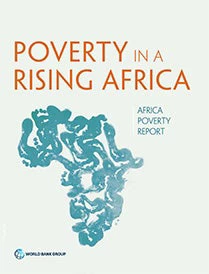
If consumption per person falls below the new global poverty line of $1.90 per day, everyone in the household is considered “poor.” If consumption is above the poverty line, no one in the household is considered “poor.” This measure is also used to monitor progress toward the first target of the newly agreed Sustainable Development Goals, to end extreme poverty by 2030.
One problematic feature of the per capita approach is that it does not consider differences in needs between adults and children. Another problem; it fails to capture differences within households. The assumption of one decision-maker or consensus among all household members is a simplification that fails to reflect the different spheres of decision-making within a household, as well as the fact that many households are not nuclear but encompass several nuclei. While this is the reality for many households, it is especially important in rural West Africa, where polygamous and intergenerational households are prevalent.
Non-monetary indicators of poverty routinely tell us that substantive gaps persist among household members in terms of access to other resources such as schooling services and protection against shocks. Gender and age are arguably key fault lines along which these differences emerge. Yet there are some practical explanations as to why monetary poverty estimates typically don’t distinguish among individuals within households.
For instance, it’s difficult to say with certainty what gets shared, how extensively, and by whom. Collecting individualized data on food requires detailed information on how meals are consumed over several days, such as the number of plates and specific portion sizes consumed by each individual. Collecting such detailed information is often considered infeasible in the context of large-scale household surveys. Goods used jointly by several people are, further, notoriously difficult to assign to specific individuals—think of housing, or a washing machine.
Filling in the gaps
An interesting survey aimed at better understanding household structure in Senegal sheds some light in this area. The results of this work are discussed in a new World Bank Group report, Poverty in a Rising Africa.
Economists Philippe De Vreyer, Sylvie Lambert, Abla Safir, and Momar Ballé Sylla collected data to build a relatively individualized measure of consumption, which can be used to better assess individual consumption and economic welfare. To best reflect intra-household structure and resource allocation, each household was divided into “cells” whereby the head forms a cell with unaccompanied dependent members, while married brothers and each wife of the head and her children and any other dependents then form separate cells. This cell structure is characteristic of households in Senegal—and other parts of West Africa.
Food expenditures are compiled based on a detailed account of who shares which meal and how much money is specifically used to prepare the meal. Next, individual consumption is collected at the cell level. Finally, expenditures shared among cells, such as housing or electricity, are collected and attributed equally to all household members.
A measure of per capita consumption is then constructed at the cell level—expenditures specific to the cell and not shared with any other cell plus the cell’s imputed share of joint household expenditures. This allows calculation of unequal consumption levels within households.
These data are revealing.
In general, food expenditures are more or less equitably distributed, a critical insight that underscores basic solidarity. This doesn’t hold true for non-food expenditures, though. The ratio between expenditures of the richest and poorest cells within a single household can be as high as 23—and still above 4 after trimming off the 5 percent most unequal households.
Computing an inequality index for the distribution of cash expenditures in the population, the Gini index is 0.548 when each person is attributed their household’s average per capita consumption level, or 0.553 including utilities. This is similar to standard inequality computation, which assumes resources are shared equally.
But when each individual is attributed the per capita consumption of his or her cell, the Gini index rises to 0.567, or 0.579% with utilities. The Gini index in the distribution of the cell-specific component of food expenditures is 0.401 while the index for non-food expenditures is 0.748.
The consumption data also reveal a sizeable gender gap.
Cell consumption of male heads is approximately 77% higher than that of female heads, and this difference is statistically significant at the 1% percent level (Lambert, Ravallion and van de Walle 2014).
Within households, some cells are found to be poorer than others.
Philippe De Vreyer and Sylvie Lambert’s research shows that about 1 in 10 non-poor households comprises a poor cell within. Non-poor cells are also found in poor households. Larger cells, often containing young children, figure prominently among poor cells.
Based on this analysis, in Senegal, by targeting poor households, policies aiming to reduce child poverty would miss between 6 percent and 14 percent of poor children, depending on the poverty line. And how should public transfers be allocated across and within cells?
In Senegal, allowing for the intra-household allocation of resources clearly matters. In other countries with less structurally complex households, it may matter less—but we still have no way of testing this. At least not yet.
- Africa is rising! But are people better off?
- Who will fund poverty surveys in Volkswagen countries?
- The European refugee crisis: What we can learn from refugees in Sub-Saharan Africa
- Poverty is falling faster for female-headed households in Africa
- The shock of widowhood: Marital status and poverty within Africa
- Domestic Violence and Poverty in Africa: When a Husband’s Beating Stick is Like Butter



Join the Conversation